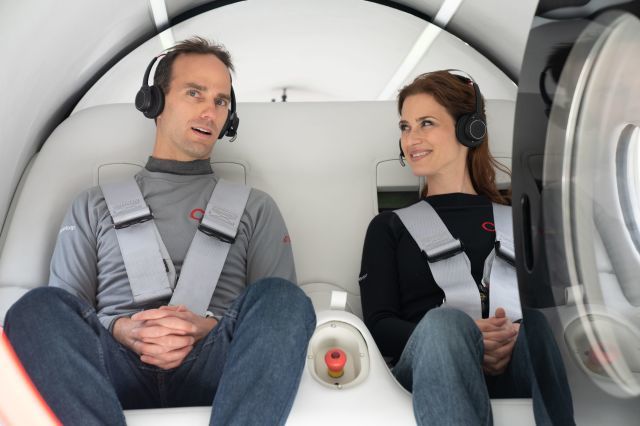
Virgin Hyperloop (Hyperloop One), formerly known as Hyperloop One, was the first to carry passengers and conduct a test drive. The Hyperloop is the next-generation transportation method proposed by Elon Musk, and is a vehicle that runs at high speed in a tube with reduced air resistance. In this test, the XP-2 (Experimental-Pod-2) was installed with seats for two people.
On November 8th, Virgin Hyperloop conducted its first personnel transport test at the DevLoop facility in the desert suburban Las Vegas, Nevada, USA. It ran for about 15 seconds in a 500m test tube. The top speed is said to have reached 172km/h. Of course, in the hyperloop concept proposed by Elon Musk, the maximum speed reaches 1,216km/h, but this degree of acceleration is impossible in a section of about 500m. It is currently under construction in West Virginia with a $500 million investment in long-distance test tubes. When completed, it is expected to be able to carry passengers at a higher speed and test drive.

In the days of Hyperloop One, Virgin Hyperloop has repeatedly tested unmanned pots more than 400 times, including recording speeds of over 300 km/h using a prototype unmanned. In the future, it is planned to drive high-speed magnetic levitation and vacuum suction tubes. Therefore, an airlock system between the lifting position and the vacuum tube is also being developed.
The first passengers are Virgin Hyperloop CTO Josh Giegel and customer segment leader Sara Luchian. As the first passenger, 40 people who wished to board the board were gathered in the company, and Ruqian was said to have obtained this seat through a lottery. Since it is the first boarding, it is said that the safe escape method is also carefully checked in case of an emergency.
They emphasized that there was no problem with safety, saying that it was not much different from the acceleration of a sports car and was softer than expected when they finished their first ride. Virgin Hyperloop said that this is an event that has the same meaning as a lunar landing, and it can be said that the XP-2 is approaching the goal of realizing a final design 28-seater pod that will safely carry passengers and drive. He added that the ability to transport passengers could attract global investors’ interest in the business and lead to financing for the next step.
The U.S. Department of Transportation issued a guideline in July explaining that Hyperloop is part of the Federal Railroad Authority’s regulatory framework. While Hyperloop is federally regulated, he says it also deserves federal subsidies for the construction of routes. Related information can be found here .


















Add comment